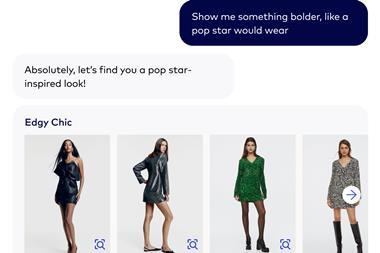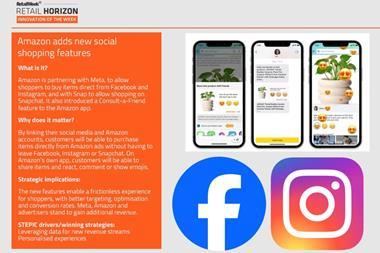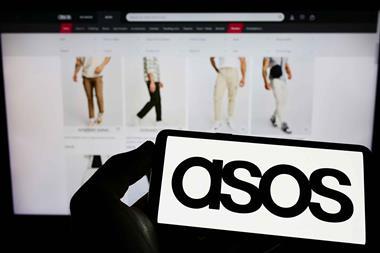As fashion giant Asos recently introduced restrictions on its buy now, pay later services in a bid to improve profitability, Retail Week explores if retailers are moving away from or leaning into pay later credit services, and what this means ahead of the festive season.

Allowing shoppers to stagger payments for their shopping with interest-free instalments, buy now, pay later (BNPL) credit services have become hugely popular during the cost-of-living crisis.
Retailers offering pay later are not currently regulated by the Financial Conduct Authority (FCA), which has voiced concerns regarding the risk to customers.
And while UK consumer rights law has reportedly been used to make pay-later contracts fairer, many retailers have continued to offer BNPL in a bid to boost sales for shoppers with cashflow issues.
Dunelm and THG are some of the newest retailers to begin offering Klarna and Newpay services, while John Lewis recently confirmed plans to expand its in-house pay later offering.
As profitability gets squeezed further, will other retailers join Asos in restricting ‘bad’ shoppers from the service? Is pulling back wise when more shoppers than ever are looking to spread the cost of this year’s Christmas festivities? Or is the reward of attracting new shoppers worth the risks involved?
First choice for Gen Z
Retailers offering some form of BNPL include Boohoo, JD Sports, Apple and Gymshark, while Selfridges, Boden and Uniqlo are some of the latest retailers to link up with Klarna.
Klarna has a total of 500,000 global merchant partners to date, 32,000 of which are UK-based. With more than 18 million active UK users and an average consumer spend of £80, Klarna’s most recent quarterly results proved a triumph.
Clearpay’s latest economic impact report also found that since August 2022 the company contributed £940m in additional sales to its UK merchants.
Almost half of Gen Z customers said they would increase their use of pay later “if it were more widely available”.
Peel Hunt analyst John Stevenson says that Klarna and Clearpay are among the pay-later providers that are likely to continue to be a first-choice option for shoppers in the long term.
He said: “If you look at the impact of buy now, pay later, you typically find higher basket size and better conversion, so it has certainly been generally effective for retailers.
“Buy now, pay later is here to stay. Generationally, it has been embraced by younger customers, so if you look at the penetration of buy now, pay later vs credit cards, it is much higher.”
A survey conducted by Finder earlier this year shows that 40% of respondents used pay later for the first time in the last year, demonstrating that BNPL does bring in new customers.
“Irresponsible” consumer risk
Despite the BNPL boom noted by Klarna and Clearpay, Asos introduced restrictions earlier this year.
The service is no longer available to all Asos customers, part of the fashion retailer’s “targeted action” in monitoring shopping behaviours and improving those of its “least profitable customers”.
The increased use of pay later evidently correlates with an increase in poor shopping behaviours.
Global data retail analyst Louise Déglise-Favre says that while pay later is a great option for consumers, it can be dangerous for retailers.
“For retailers, it allows people to split their cost without paying interest, therefore it is an incentive for consumers to buy and is a good thing to offer.
“The problem is that some consumers might not pay or be late in paying, so it adds uncertainty for the retailers and the providers themselves,” she says.
“Pay later can encourage irresponsible behaviour because people sometimes think they can afford things which in reality they can’t.”
Déglise-Favre adds that it would not be surprising to see providers introduce an interest rate in the future in order to cover themselves and their retail partners.
As clothing remains the most popular category for customers using pay later – Stifel’s Finder survey found 28% of respondents listed “to try on before I pay” as a main reason for using BNPL – it is likely that fashion retailers will follow Asos in an attempt to improve shopper behaviour and reduce return rates.
Black Friday peaks
According to Stevenson, pay later is a facilitator for Black Friday and Christmas shopping, marking a key period for pay later.
“There is going to be a lot [of promotions] going on over the next five weeks as we build into Christmas. Certainly, for online retailers, the peak gets later and later every year, and Black Friday has become a month-long and then it rolls into Cyber Monday,” he says.
“A lot of people also tend to shop for themselves on Black Friday as well as for presents.”
A recent survey from Creditfix shows that 30% of consumers are planning to use “some form of credit” during the peak season and pay later tops the credit chart with 15.3% opting for pay later over credit cards, store cards and overdraft facilities.
While BNPL may encourage ’bad’ shopping behaviour in certain customers, pay later has become an increasingly important part of retail competitiveness.
As a way to attract new shoppers and boost basket sizes, the reward currently seems to outweigh the risks.


























No comments yet